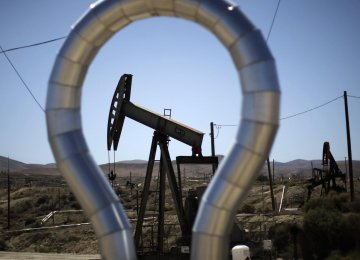Wall Street’s biggest banks have changed sides and are embracing a surge in oil prices.
Goldman Sachs Group Inc., Morgan Stanley and JPMorgan Chase & Co. have all issued a flurry of bullish forecasts in the past two weeks. They have abandoned their skepticism and are accepting that OPEC’s output cuts are finally succeeding in clearing a global glut, Bloomberg reported.
This faith is a recent phenomenon. At almost every stage of OPEC’s quest to end the industry’s worst downturn in decades, there were a few prominent analysts ready to cast doubt on the effort.
Now, the “New Oil Order” that Goldman declared in 2014—effectively saying the Organization of Petroleum Exporting Countries was obsolete—is officially “on hiatus”.
Goldman and others had predicted in 2014 that any effort by OPEC to curb supply would hardly amount to much. The US shale industry can raise production at such a pace and volumes that it would fill the gap.
OPEC shared this view, but then surprised the market in September 2016 by announcing their intention to cut supply.
Skepticism persisted. Most analysts surveyed by Bloomberg in November that year expected member countries to fail to reach an agreement. BP Plc said the mood in the market was “pessimistic”.
Yet on Nov. 30, the pact was finalized. The bigger surprise came 11 days later as a number of countries outside the group joined the deal, including former rival Russia. It had once been thought unfeasible this could ever happen.
Analysts earlier warned of a new surplus in 2018 and the need for OPEC to persevere with its alliance. They are now rethinking their pessimism.
Citigroup and Goldman have changed tack to say the inventory excess has disappeared. Others, including UBS Group AG and Societe Generale SA, said last month that OPEC and Russia should wind down the strategy earlier than scheduled, phasing out the cuts from the middle of the year.
Even the International Energy Agency, which remains neutral on market policy, cautioned that the cuts would only backfire as $60 oil triggers a flood of American supply.
Sure enough, the boost to prices from OPEC’s strategy has invigorated US output, which surged to a 47-year high of 10 million barrels a day in November.
Nonetheless, forecasters are predicting prices will return to levels considered unthinkable during the downturn, despite the US supply.
Goldman boosted its six-month price target by a third on Thursday to $82.5 a barrel. JPMorgan’s estimate of $70 a barrel for average Brent prices in 2018 is almost 50% higher than in early October.











Add new comment
Read our comment policy before posting your viewpoints